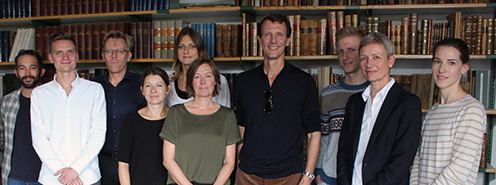HRH Prince Joachim films documentary at the Arnamagnæan Institute
In November last year, HRH Prince Joachim, younger son of Queen Margrethe II of Denmark, visited the Arnamagnæan Institute while filming a new documentary series that will be broadcast on Danish television in the autumn.

Prince Joachim will be narrating the series, which over the course of six episodes will take a look at the Danish people, who they are and what they’re made of where they come from.
The programme focuses on Danes today. How have faith, power, knowledge, law, borders and symbols made them who they are? Prince Joachim’s family has been a part of Danish identity for more than 1000 years, and Danish history is therefore a subject close to his heart. “I have always been interested in the development of Denmark. How did we get here? Where does the society from which we all benefit come from? Who built it, and was it all a bed of roses? Probably not”, says Prince Joachim in a press release.
Prince Joachim and his film crew visited the Arnamagnæan Institute for the episode on faith, where they examined AM 858 4to, which contains the Chronicon Skibyense, a manuscript found by chance in 1650 sealed within a hollow space in the choir wall behind the altar at the church of Skibby in Zealand. The autograph manuscript contained a history of Denmark in Latin by the Catholic reformer, theologian and provincial of the order of Carmelites in Scandinavia, Poul Helgesen (c. 1485–1534), known as Paulus Helie in Latin. Named Chronicon Skibyense after the place where it was found, the chronicle relates political and ecclesiastical events from 1448 to the autumn of 1534, where the record ends in mid-sentence.
We were delighted to be able to contribute to this series and for the chance to showcase one of the many unique sources of Danish history that are found in our collection. If you would like to know more about AM 858 4to, you can read Anne Mette Hansen’s post about the manuscript from when it was Manuscript of the Month in February 2017.
